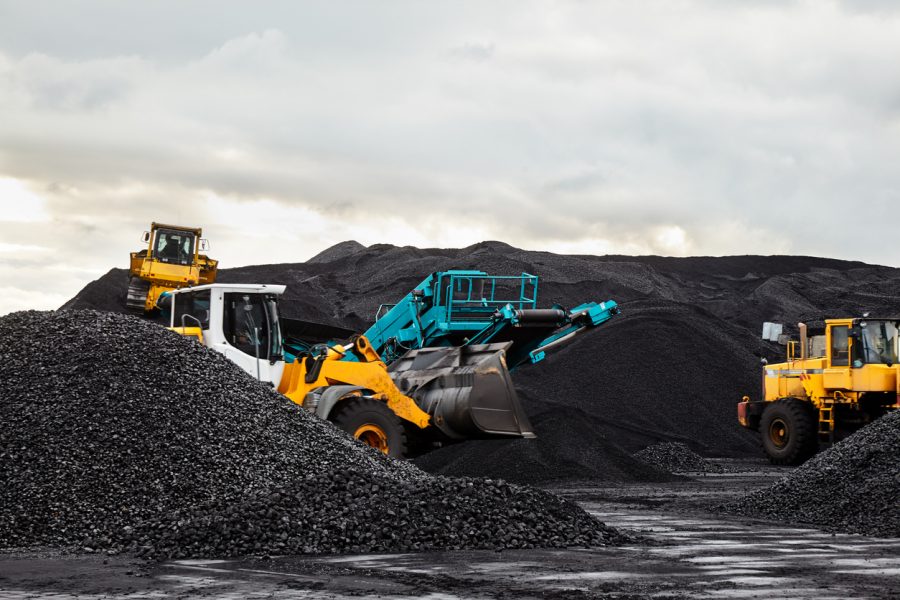
Three key reasons behind India's acute coal crisis
Amid spiralling power demand due to sweltering heat and increased industrial activity, coal plants face high prices and supply challenges

Amid the sweltering heat in what is considered an exceptionally hot summer, India is suffering a power crisis. And, this power shortage comes barely six months since the last one, in October 2021. Behind the electricity shortage is an acute scarcity of coal supplies.
Around 70 per cent of India’s electricity is generated by thermal power plants; hence, alternative sources such as wind and solar are not adequate to produce enough power for the nation.
The annual coal consumption in India is over 1 billion tonnes, and thermal power plants account for three-fourths of it. According to media reports, last month, the nation’s coal reserves fell 17 per cent, with a coal stock of 21 million tonnes – just enough supply for nine days. At least 108 of the 173 thermal coal-fired plants nationwide are said to have critically low levels of coal inventory.
Podcast: Why Indonesia’s palm oil export ban is not likely to last long
If the situation continues, blackouts are imminent. It is feared that essential facilities such as hospitals will be hit hard.
There are three important reasons why post-pandemic India is facing an acute shortage of coal, and therefore, power.
Sharp decline in supply
India is the fourth-largest coal producer globally, with 80 per cent of coal output coming from Coal India Ltd (CIL), a public sector undertaking. Yet, the country’s power requirement is so huge that a large chunk of coal is imported. Over the past year, international coal prices have escalated to a record high, first due to COVID-led disruptions, and more recently due to the Russia-Ukraine war. This has hit imports hard.
Per media reports, some power producers are paying a premium of 300 per cent to maintain coal reserves at their plants. At the same time, the Andhra Pradesh government has cancelled two coal import tenders due to ‘exorbitant prices’, reducing imports significantly. These factors are putting pressure on local coal mines. Adding to the anxiety, the cost of imported coal in India is expected to rise 35 per cent in the coming months.
Also read: India’s unemployment rate rises to 7.8% in April; Haryana tops list
Owing to the rising prices, coal imports in several power-generating states have dropped. Further, there are unresolved pending contractual issues with power plants that will worsen the situation, said an Economic Times report, quoting Power Ministry officials.
Slow movement of goods
The timely movement of coal supplies locally is another persisting issue. The Railways has often been criticised for the slow movement of goods and coal rakes, critically impacting coal supply. The ET report said that imported coal transportation would require more railway rakes (wagons), a shortage of which is currently the main reason for lower inventories at power stations.
Late last week, to address this issue, the Railways said it has decided to cancel 753 trips involving 42 trains to prioritise the delivery of coal rakes across the country. The cancellations will mainly be on key coal-producing states such as Chhattisgarh, Odisha, Madhya Pradesh and Jharkhand.
The Rail Ministry has raised the daily loading of coal rakes to over 400 a day on an average, the highest in five years, said an Indian Express report. Further, it has also put over 500 rakes for coal duty per day.
Escalating power demand
Energy use is at a record high in India and steadily rising, thanks to the post-COVID pick-up in the economy, leading to increased power consumption by industries. From 106.6 billion units per month in 2019, power demand rose to 124 billion units in 2021 and 132 billion units per month in 2022.
Also read: Coal shortage: Nuclear power repository comes in handy for TN
The ongoing heatwave further increases power consumption, requiring cooling appliances to run continuously, leading to a power shortage. As a result, the peak power shortage rose swiftly in three days between April 25 and 28, from 5.24 GW to 10.77 GW, said media reports.
Shortages have become rampant. Since the start of April, Jharkhand has been the worst hit, facing an average supply shortage of 10-12 per cent, followed by Andhra Pradesh (10 per cent), Uttarakhand (8-10 per cent), Madhya Pradesh (6 per cent) and Haryana (4 per cent), reports said. The states have no choice but to meet the demand with load shedding.
What the government is doing
India depends heavily on coal as it is the cheapest fossil fuel. According to agency reports, CIL generates 1.64 million tonnes (MTs) per day compared to 1.43 MTs in 2021. The Centre has requested state governments to import coal and power generating companies to blend 10 per cent imported coal and reduce the stress on CIL.
The catastrophic situation brings focus to India’s pledge to switch to sustainable energy sources (like solar and wind power). At the Paris Accord (COP26) last November, Prime Minister Narendra Modi declared that by 2030, India would generate 50 per cent of its power requirement from renewable sources. The latest coal shortage and power crisis may spur the Centre to act faster on that goal.

